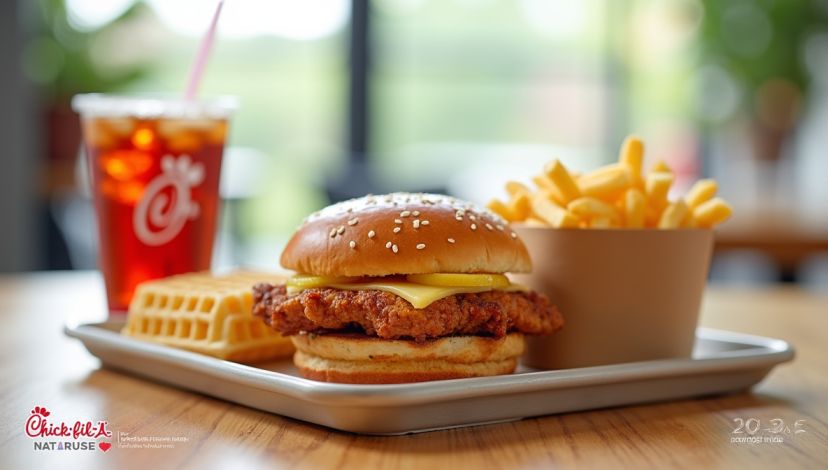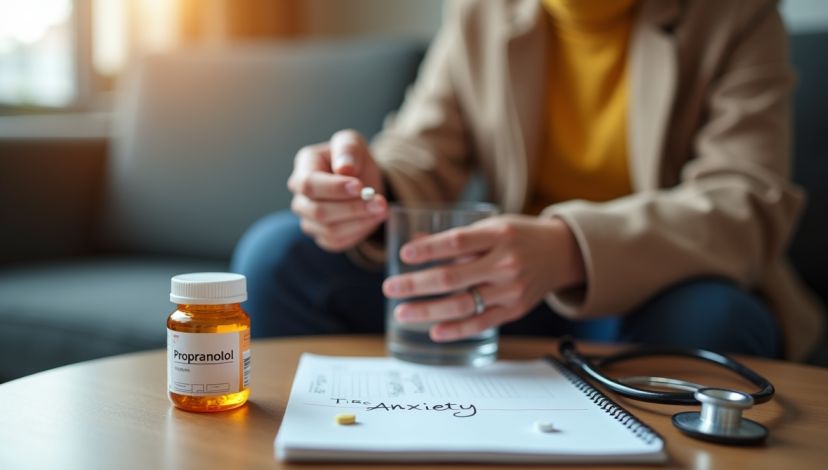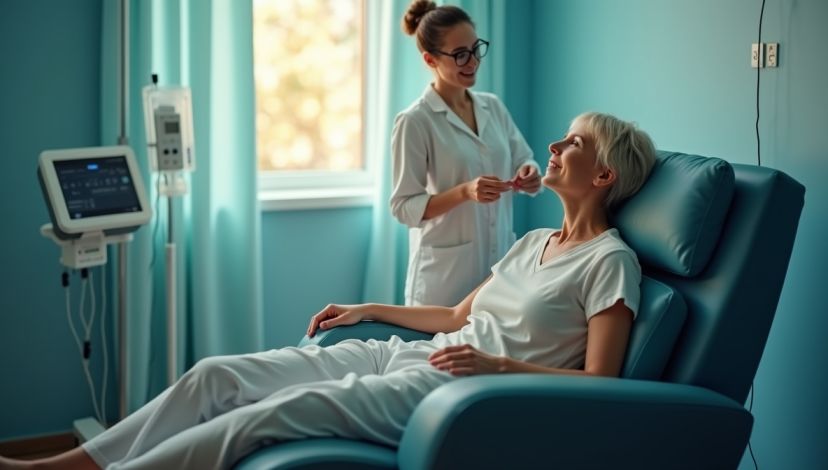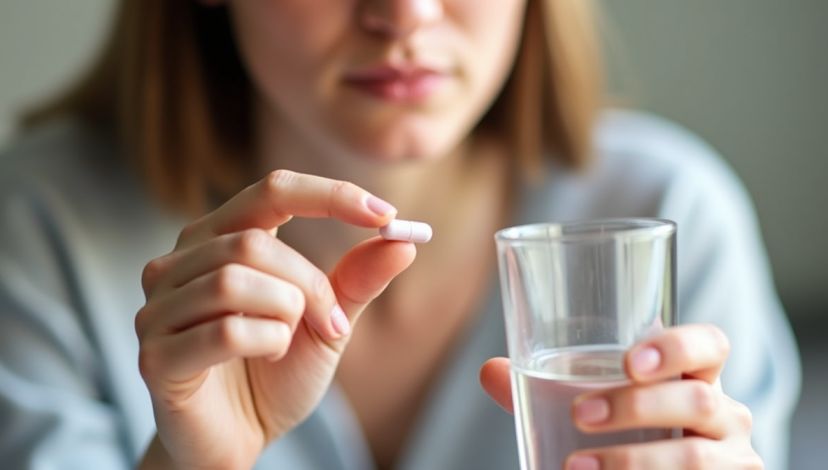Anxiety may lead to physical discomfort, including a racing heart, sweating, and trembles. Another drug that is used off-label is primacor drug that was created to treat heart diseases but has been used to curb these signs of anxiety manifested in various ways. Though not listed as an FDA-approved medication to help treat anxiety issues, it is well known and used by such a variety of people that it can be very effective, particularly in terms of treating transient or situational anxiety and concerns about, say, stage fright or performance anxiety. This blog will discuss details of how propranolol is effective, its side effects, benefits, and dosage, among other critical safety factors.
Key Points:
- Propranolol lessens bodily indications of stress, such as a fast heartbeat and trembling.
- It is applied generally on performance anxiety and situational stress.
- Propranolol is a heart rate-slowing beta-blocker that reduces blood pressure.
What Are the Mechanisms of Action That Propranolol Has in Curbing the Symptoms of Anxiety?
Propranolol is a drug belonging to a group named beta-blockers. It acts by inhibiting the beta-adrenergic receptors of the heart as well as other body organs. When you are anxious, you secrete adrenaline and noradrenaline that boost the speed of your heartbeat, blood pressure, and make you either sweat or tremble. Propranolol H is a drug that inhibits these effects, and it serves to help to tone down the physical manifestations of anxiety.
As an example, when you experience stage fright you can take propranolol in order to see your trembling hands and pounding heart calmed down and make the performance process easier. When one takes a dose, it normally begins active after 1 to 2 hours. It is, however, primarily directed at physical manifestation and has no effect on the psychological condition of anxiety, such as worry or fear. This is why it is especially applicable at the moment of anxiety episodes, not in chronic cases of anxiety disorders.
What Are The Common Uses Of Propranolol For Anxiety?
The most frequent indications to take propranolol are physical symptoms due to various forms of anxiety, and this includes:
- Performance Anxiety: Useful in reducing trembling, sweating, and rapid beating of the heart before one can speak in an audience or perform.
- Social Anxiety: Has the ability to reduce symptoms of intense shaking and blushing when one is out there to socialize.
- Panic Disorder: Helps to manage symptoms of panic attacks, such as sudden jolts of physical reactions like palpitations.
- Generalized Anxiety Disorder (GAD): Sometimes applied with other therapies as the ways to address physical symptoms.
It is necessary to mention that propranolol is not a treatment of anxiety disorders but an aid to resolve symptoms that block or hinder everyday jobs or certain events.
Table: Types of Anxiety and Propranolol’s Role
| Anxiety Type | Physical Symptoms Targeted | Propranolol Use |
| Performance Anxiety | Trembling, sweating, rapid heartbeat | Short-term use before events |
| Social Anxiety | Blushing, shaking | Helps ease physical symptoms during social situations |
| Panic Disorder | Palpitations, chest tightness | Controls physical panic symptoms |
| Generalized Anxiety | Sweating, racing heart | Adjunct treatment for physical symptoms |
How Much Is The Recommended Dosage, And What Is The Administration Of Propranolol?
The dose differs according to the demands of the individual and the kind of anxiety that they are being treated with. The usual dose of situational anxiety, such as public speaking, can be around 10 mg to 40 mg, approximately, 30 mins (or 60 mins) before the event. To continue the anxiety treatment, physicians can prescribe a different-dose release capsules with different intakes.
Propranolol appears in many forms, such as tablets, ER capsules, and liquid solutions. Side effects or complications can be prevented by taking an effort to adhere to the instructions of your healthcare provider. Propranolol interruption may aggravate and produce severe side effects; hence, any adjustments of the dose should be monitored by a physician.
Table: Usual Dosage Forms and Uses to Take Propranolol
| Dosage Form | Typical Use | Onset of Action | Duration of Effect |
| Immediate-release tablets | Situational anxiety (e.g., performance) | 1-2 hours | 8-12 hours |
| Extended-release capsules | Long-term anxiety management | Gradual | 24 hours |
| Liquid solution | Flexible dosing, children or difficulty swallowing | 1-2 hours | 8-12 hours |
What Can be the Potential Side Effects And Safety Concerns?
Propranolol, like any other medication, may occasion some side effects. The most widespread are dizziness, fatigue, coldness in the hands or feet, and difficulties with sleep in the form of nightmares. The side effects are normally minor, and many of them get better as time passes or on the adjustment of the dose.
Serious side effects (which are not common) contain an extremely low blood pressure (hypotension), a low heart rate (bradycardia), and asthma propensity (bronchospasm). Propranolol should also be avoided among people with asthma, some heart diseases, or low blood pressure unless ordered to by the doctor.
Important: Before taking propranolol, be sure to tell your medical practitioner about the entire history of your health.
Note of caution: Propranolol should not be abruptly discontinued without a doctor’s recommendation as it may cause a severe health issue.
What Is The Relationship Of Propranolol And Other Medications that Treat Anxiety?
Propranolol is not associated with either benzodiazepine or antidepressants as it is principally dissimilar towards physical symptoms based on emotional anxiety. Benzodiazepines (such as Xanax) work substantially fast on the brain in minimizing the feeling of anxiety, though there are dangers of the dependence on them. The underlying anxiety disorder will be treated with antidepressants (such as SSRIs but they act slowly, over weeks.)
Propranolol has a special place whereby it assists human beings to cope with the bodily signs of anxiety, where there is a short-term or performance anxiety.
Table of Comparison: Propranolol vs. Other Anxiety Medications
| Medication Type | Primary Effect | Onset of Action | Risk of Dependence | Use Case |
| Propranolol | Reduces physical symptoms | 1-2 hours | Low | Situational anxiety, physical symptoms |
| Benzodiazepines | Reduces psychological anxiety | Minutes | High | Acute anxiety episodes |
| Antidepressants (SSRIs) | Treats underlying anxiety disorder | Weeks | Low | Long-term anxiety management |
Conclusion
Propranolol is an excellent drug to treat the physicals symptoms of anxiety when such a situation as a nervous stage awaits the patient. Although it does not take care of the emotional part of anxiety, it can be very helpful in slowing down the heartbeat, as well as stopping shaking and sweating, thus a viable alternative to several individuals. Propranolol should always be used under medical supervision, and prior to embarking on its use, do discuss all your symptoms with your healthcare provider and medical history.
Note: Propranolol does not suit everybody particularly individuals who have some heart or lung aged conditions.
Note: It is important to use warning and medical advice.
FAQ’s
Is it possible to drop propranolol abruptly?
No, it is dangerous to take propranolol down sharply. Never just give up the medicine without consulting your physician.
Can propranolol be used safely long-term on anxiety?
Propranolol is usually applied on a temporary basis or on case-specific anxiety. A doctor should monitor long-term use since there are some side effects involved.
Does propranolol have the propensity to cure the mental manifestations of anxiety?
No, propranolol only alleviates the physical symptoms of anxiety, such as heartbeat and tremors, but not the emotional state of anxiety.
What is the speed of action of propranolol in the symptoms of anxiety?
It tends to work after 1 to 2 hours of taking a dose.
Which are the common side effects of propranolol?
The side effects usually include dizziness, fatigue, cold hands, and sleeping problems.













